About CandleScience CleanScents®
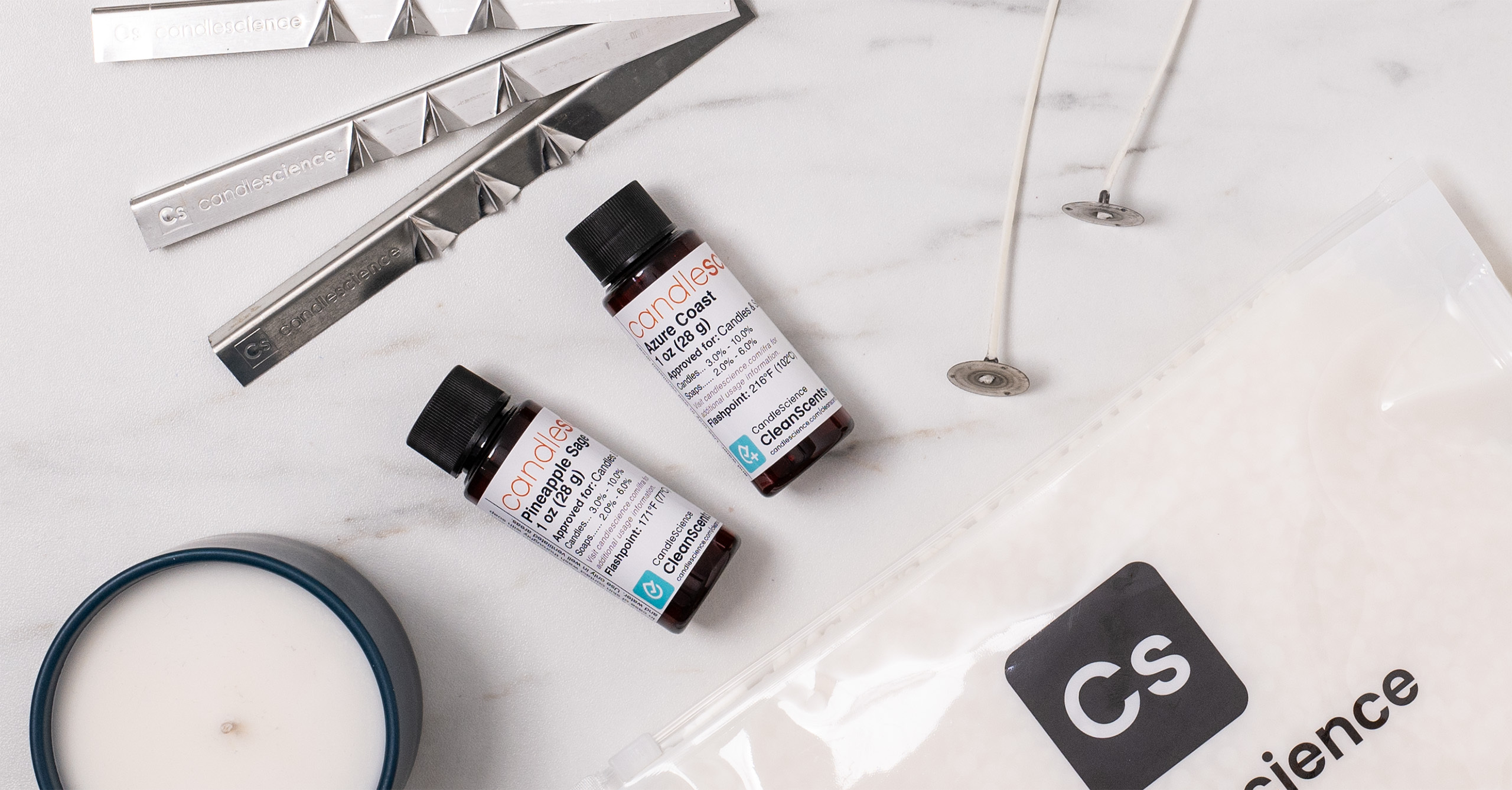
This article was originally published in 2020 and updated September 2024.
Since 2015, CandleScience has championed the use of safer fragrance ingredients in candle and soap making supplies. Our rigorous approach has fundamentally reshaped how makers, and other suppliers, approach fragrance safety.
Discover the full history behind CleanScents® below and learn how we continue to drive innovation while supporting creatives in their craft.
If you want less history and would like to see where our in-house CandleScience CleanScents® Program stands today, check out this article>>
Hello to clearer safety standards—backed by science.
We know two things with great confidence. Many makers create in their homes that they share with children and pets. And most people making scented products want them to contain ingredients that are safe to use and enjoy at home.
However, fragrances have historically been designed for use in mass-produced products made in industrial settings.
The prevailing fragrance safety standards were also developed through the lens of factory production—where safety protocols and good manufacturing practices are in place to protect the people working with fragrances in controlled, commercial environments.
But many of the makers we serve create in their kitchens. And the reality is, they don’t have access to specialized protective equipment or expensive air filtration systems at their homes and businesses.
We recognized the existing fragrance safety standards weren’t made for our makers.
Bolstered by this realization, and by our commitment to offering the highest-quality candle making, soapmaking, and flameless supplies on the market, we set out to reformulate our entire fragrance oil line specifically with the safety of makers—be they crafters, hobbyists, or indie businesses—in mind. We wanted all makers to feel confident that the fragrances they use in their homes, garages, workshops, or studios are safe to work within these settings.
This multi-year undertaking ultimately resulted in our groundbreaking CandleScience CleanScents project, which launched in 2020. The goal of this in-house regulatory program was to offer as many fragrances as possible that met our own rigorous safety standards for in-home makers.
The maker community enthusiastically embraced this innovative approach to fragrance formulation. And we were proud to lead the way in the candle and soap making supply industry by offering more regulatory transparency for fragrances geared toward individual makers and small businesses.
Over the past few years, as regulations advance and new fragrance safety research emerges, we realized an even more nuanced approach to CandleScience CleanScents® was needed. So in 2024, we introduced the latest version of CleanScents that includes tiers, along with CleanScents+ and CleanScents designations, for additional ingredient transparency.
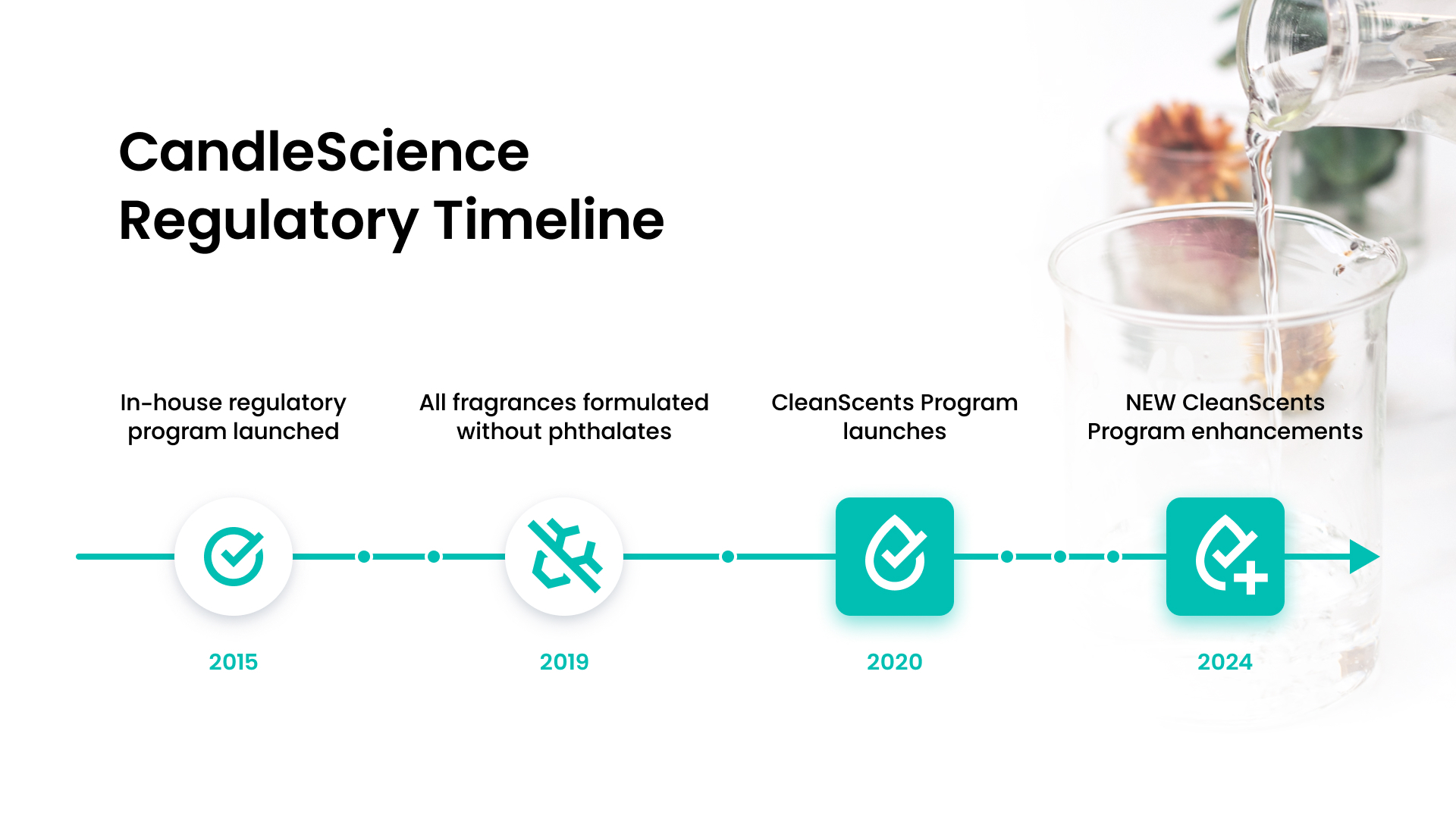
Laying the groundwork for CleanScents®
In 2015, around the time we decided that the usual fragrance safety standards weren’t sufficient for makers, we saw an additional opportunity for greater transparency about fragrance oils.
That year, the Occupational Safety and Health Administration (OSHA), adopted and began enforcing labeling requirements from the Globally Harmonized System of Classification and Labeling of Chemicals, or GHS. This set of GHS requirements, now enforced by OSHA, required the disclosure of potential hazards of a substance in a commercial facility, and for purposes related to shipping.
While these labeling requirements were not designed for fragrances specifically, they revealed concerning ingredients to us. We decided this was a chance to do something that wasn't routinely done in our industry: eliminate those ingredients and disclose more information about the materials in our fragrances.
The first phase of this work was to reformulate our fragrances without phthalates, cancer-causing ingredients that require a Proposition 65 warning in California, and similar ingredients not on the Prop 65 list. And in the summer of 2019, we completed this extensive process.
But we were just getting started!
Creating our first fragrance standards: CleanScents
The International Fragrance Association (IFRA) and the Research Institute for Fragrance Materials (RIFM) are the two organizations involved in developing standards for fragrance materials. IFRA examines the research conducted by RIFM, and informed by that data, sets standards for the use of fragrance materials.
Looking at both the 2015 GHS requirements and IFRA standards, we then began developing the CleanScents criteria.
We took the CleanScents framework to the fragrance houses we partner with to design and manufacture our fragrance oils. These unprecedented standards stretched the creativity of the perfumers and fragrance chemists who had never developed fragrances in this way.
At the same time, we overhauled our testing processes and facilities, hired new people to rise to this occasion, and developed new tools for evaluating fragrance oils. In the end, we tested around 600 fragrance revisions before unveiling CleanScents in 2020.
Our goal was to transition the entire CandleScience library to have only CleanScents fragrances. But a few years into this program, we realized we hadn’t fully anticipated the ramifications of one important detail of our framework that made achieving this goal difficult.
Evolving with experience
The original CleanScents framework avoided carcinogens, mutagens, reproductive toxins, organ toxins, and acute toxins.
However, each year RIFM releases a list of fragrance ingredients that may pose a potential hazard through its Safety Assessment Program. These ingredients are flagged because the scientific understanding of them has evolved. Not because the ingredients themselves have changed.
There are two types of ingredient updates from RIFM that impact CandleScience fragrances. The announcement of suspected or confirmed carcinogens, mutagens, or reproductive toxins (CMRs).
But CleanScents didn’t acknowledge this difference. And, we had promised that none of these things would be in our fragrances without realizing that sometimes naturally occurring ingredients like gamma-Terpinene, which is a significant component of citrus fruits, could trigger the removal of a fragrance from our CleanScents program.
The impact to CleanScents
Historically, we considered a fragrance containing a CMR—suspected or confirmed—as no longer being a CleanScent. That meant fragrance oils—that many customers loved and had come to rely on—automatically lost their CleanScent status when RIFM published its latest list of suspected ingredients in these hazard groups. Another consequence? In-development fragrance oils faced reformulations, release delays, and even cancellations.
So we developed a tiered system, along with CleanScents+ and CleanScents designations, so customers can easily identify the fragrance ingredients and choose the oils they’d like to use.
But first, we’ve done a lot of talking about these hazard groups. What are they?
✖ Carcinogens: When confirmed, these are materials known to cause cancer.
✖ Mutagens: Materials that change the DNA of a cell, harming the cell and causing diseases like cancer.
✖ Reproductive toxins: Toxins that adversely affect reproductive organs and increase the risk of birth defects.
✖ Organ toxins: These are toxins that cause adverse effects or disease within specific bodily organs.
✖ Acute toxins: Toxins that cause adverse effects from a single exposure. Generally, this would be accidental exposure like spillage or ingestion.
So…what is this tiered system and what do the designations mean?
Regardless of where a fragrance oil falls in our system, every single one is vegan, cruelty-free, and formulated without phthalates and ingredients found on California’s Proposition 65 list. And with the use of proper ventilation and basic personal protective equipment—like gloves and glasses— all our fragrances exceed widely accepted fragrance industry standards.
The two main categories are CleanScents+ and CleanScents, which are fragrances that avoid ingredients known to be in these 5 main hazard groups.
CleanScents+ fragrances contain no known or suspected carcinogens, mutagens, reproductive toxins, organ toxins, or acute toxins.
CleanScents fragrances do not contain organ toxins or acute toxins. However, they contain an ingredient recently added to the RIFM list of suspected carcinogens, mutagens, or reproductive toxins.
We’ve chosen to disclose this information so that you can learn more about fragrance ingredients and choose fragrances that align with your values and customer preferences.
How can you identify CandleScience fragrance classifications?
Each fragrance product page will show a CleanScents+ logo, a CleanScents logo, or no logo. If a fragrance contains a suspected CMR, the ingredient name will be displayed on the page with a link to more information.
All other fragrances on our site that do not have a CleanScents designation contain at least one known carcinogen, mutagen, or reproductive toxin in the formulation. Fragrances without a CleanScents designation are more likely to be discontinued, but that decision is based on sales and/or customer requests for reformulations.
Safety Data Sheets and Pictograms
All reputable suppliers will provide a safety data sheet (SDS) available for each fragrance. These SDSs detail OSHA/GHS pictograms at the top. Some of the most common are:
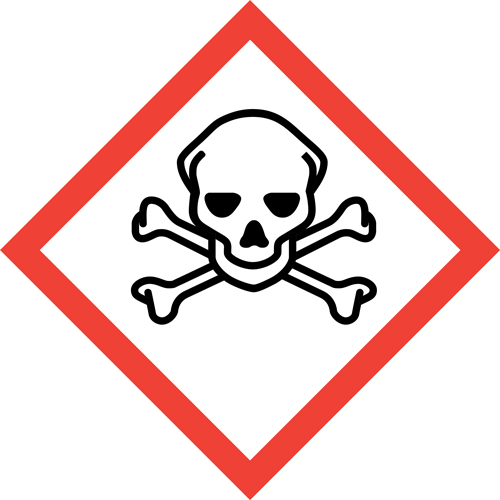
Skull and Crossbones
The Skull and Crossbones pictogram is the one to be most concerned about. It indicates the presence of acute toxins that can be fatal.
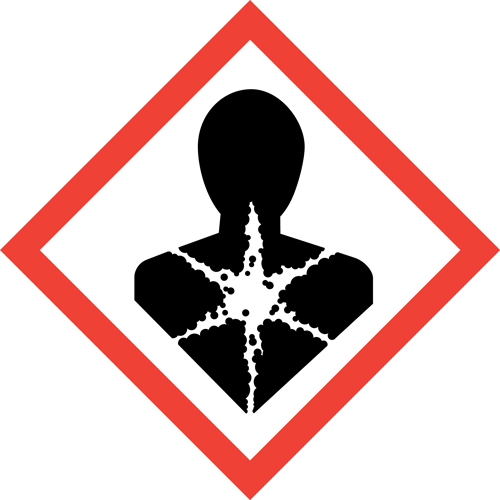
Health Hazards
The Health Hazard pictogram indicates the presence of an ingredient that may cause, or is suspected of causing, serious health effects.
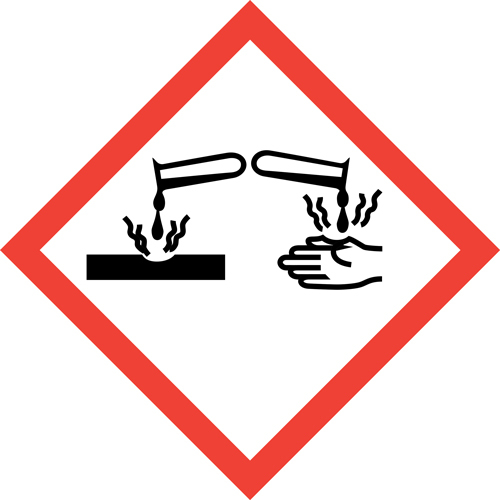
Corrosion
Indicate ingredients that may cause corrosive damage to metals, skin, or eyes.
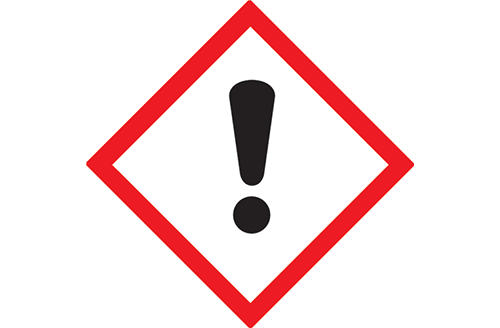
Hazard
Indicates an ingredient that may cause irritation or allergic response in those allergic to the ingredient. These effects are temporary and not severe, representing a much lower risk than fragrances that carry the pictograms above.
When shopping for fragrances, look carefully at the SDS provided by the fragrance manufacturer or supplier. If these sheets from a supplier all seem to contain the same information, this can be a red flag. Suppliers are required to provide accurate SDS sheets for every fragrance they sell. If you notice seemingly identical SDS sheets, we encourage you to ask that supplier more questions before purchasing.
What to expect on a CandleScience SDS
CandleScience CleanScents+ Fragrance SDS
CleanScents+ fragrances are free from CMRs, acute toxins, organ toxins, phthalates, and ingredients on the California Proposition 65 list. Of the pictograms displayed above, SDS sheets will only show the hazard pictogram.

Hazard
Indicates an ingredient that may cause irritation or allergic response in those allergic to the ingredient. These effects are temporary and not severe, representing a much lower risk than fragrances that carry the pictograms above.
CandleScience CleanScents Fragrance SDS
CleanScents fragrances are free of acute toxins, organ toxins, phthalates, and ingredients on the California Proposition 65 list. They contain one or more ingredients suspected of containing a CMR. Of the pictograms displayed above, SDS sheets will only show the hazard pictogram and health hazard pictograms.

Hazard
Indicates an ingredient that may cause irritation or allergic response in those allergic to the ingredient. These effects are temporary and not severe, representing a much lower risk than fragrances that carry the pictograms above.

Health Hazards
The Health Hazard pictogram indicates the presence of an ingredient that may cause, or is suspected of causing, serious health effects.
Today and Beyond
The goal of all this work was, and remains, simple: peace of mind for anyone using our fragrance oils in their homes, around their families, and in their businesses.
We have always been committed to having the safest, highest quality, most thoroughly tested fragrance line in our industry. Striking a balance between safety and performance requires ongoing monitoring to make sure we stay up to date with the most recent data and research. As regulations evolve and new fragrance safety research becomes available, CandleScience CleanScents standards evolve, too.
We are extremely proud to name so many of our fragrances as CandleScience CleanScents+ and we will continue to push for more ingredient transparency. We want our community to experience the joy of creating something amazing, confident that they are using fragrances designed to be safely used in everyday settings. When you’re using CleanScents+ in your handcrafted products, that peace of mind is yours.
Browse all CleanScents+ and CleanScents fragrances.